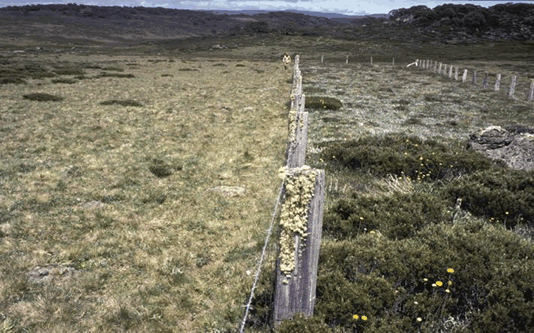
Summary of final report on the Australian Flora Foundation funded project:
John Morgan & Pete Green
Department of Botany, La Trobe University, Bundora 3086, Victoria July 2013
Grant Details Final Report
The Pretty Valley Grassland Plots on the Bogong High Plains are of National Significance. Established 1945-1947, they constitute the second longest running ecological experiment in Australia. The study, to examine how cattle grazing impacts the range condition (i.e. vegetation cover, bare ground, litter) of alpine grassland, have been monitored periodically ever since their establishment. However, data analyses have been largely restricted to analysing trends in the cover of common species. In this ambitious project, we used Australia Flora Foundation funds to help database the original data (1946-2009). Much of this data was stored as paper copy in filing cabinets. Hence, it was no small task to database 60 years of information, collected as point quadrat data from over 80 permanent transects, and then check the data entry to identify and rectify the many errors. Having achieved this aim, we have undertaken the first study to analyse patterns of change in the plant community over time in the presence / absence of grazing. Using non-metric multidimensional ordination techniques, we show that alpine grassland has changed substantially over time. In part this reflects the impacts of grazing – the vegetation has changed as it recovered from grazing. However, grazed ‘control’ plots have also changed, albeit less than the ungrazed plots. This probably reflects the underlying role that climate variation (e.g. drought, variation in snow duration) plays on plant community change. Our database and initial analyses provide an excellent opportunity to track future change in alpine grassland in response to fire and climate change.
